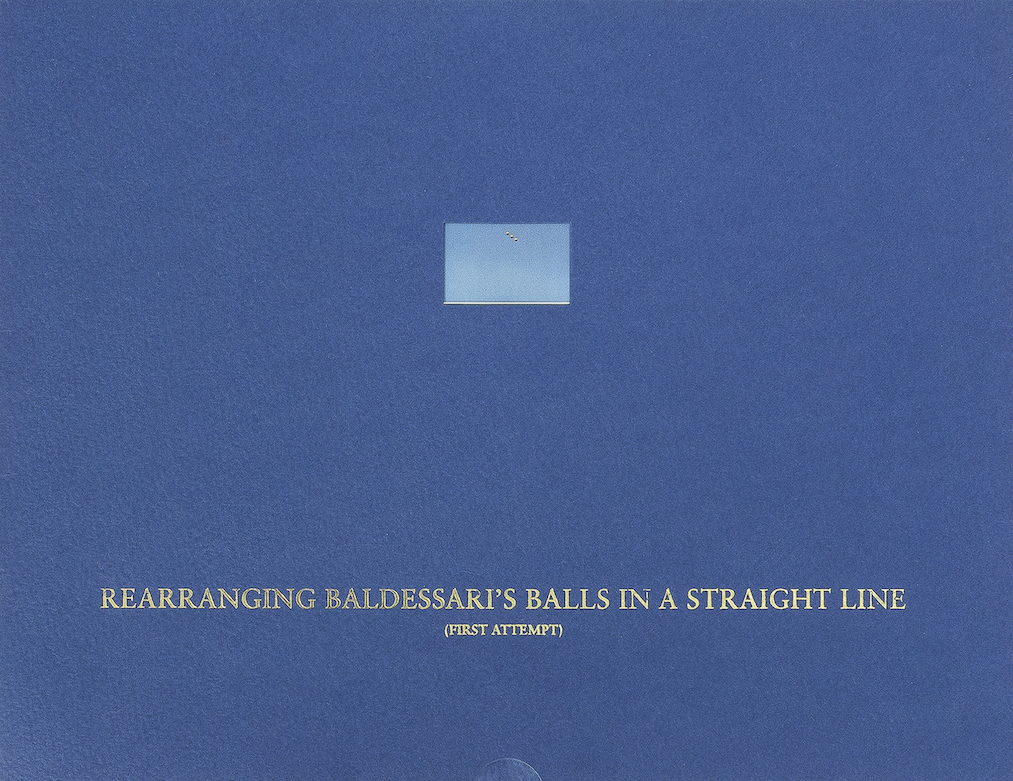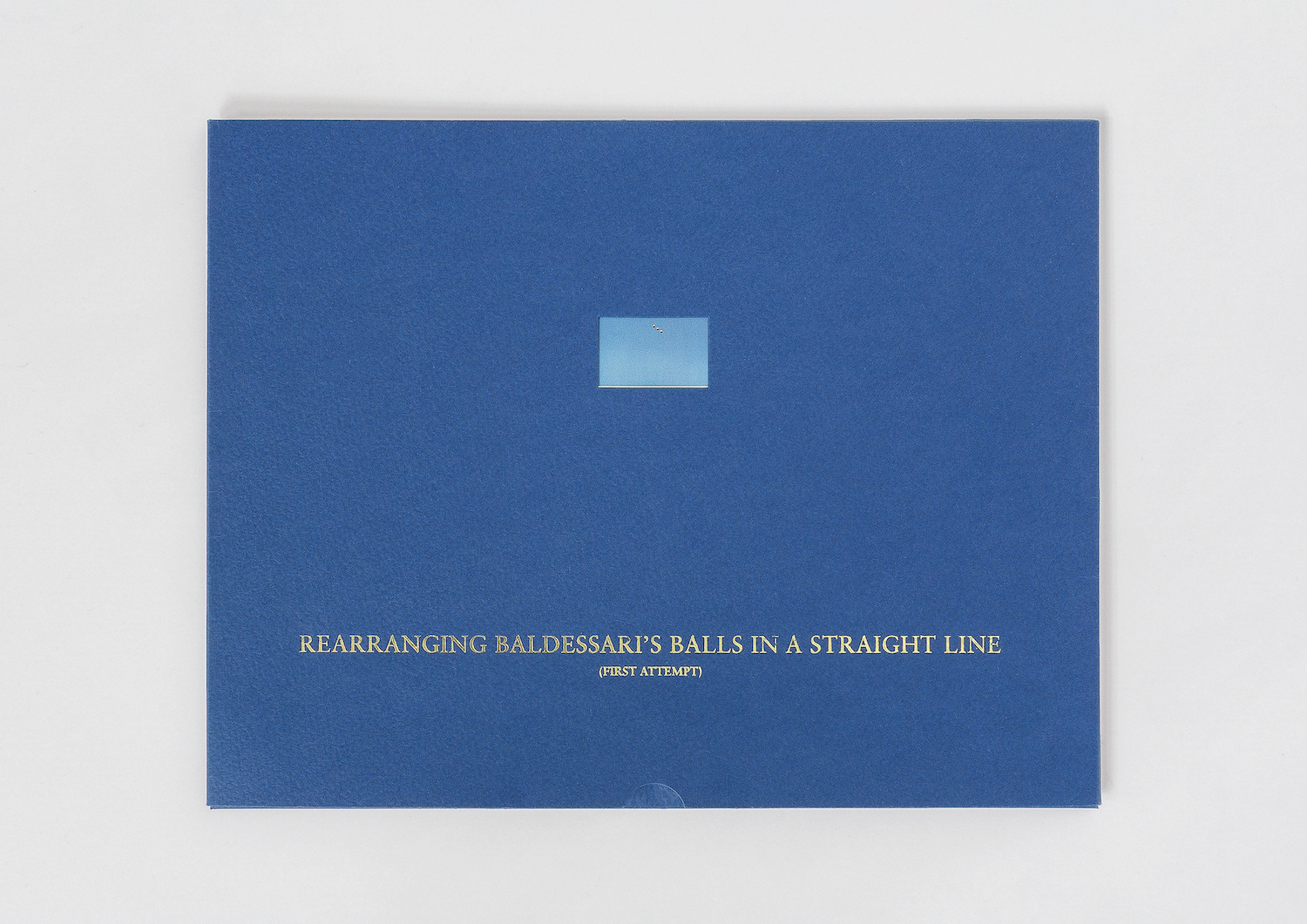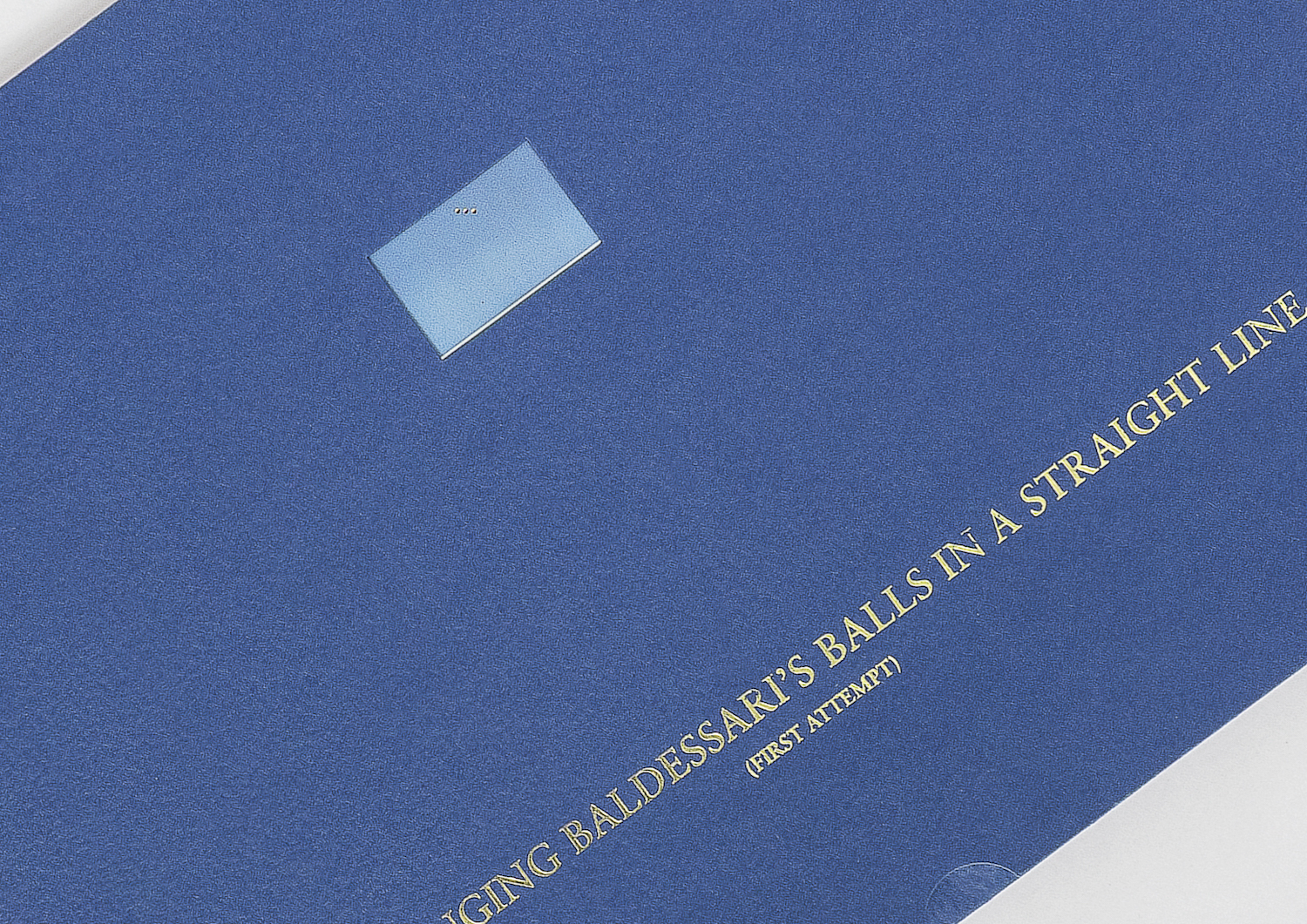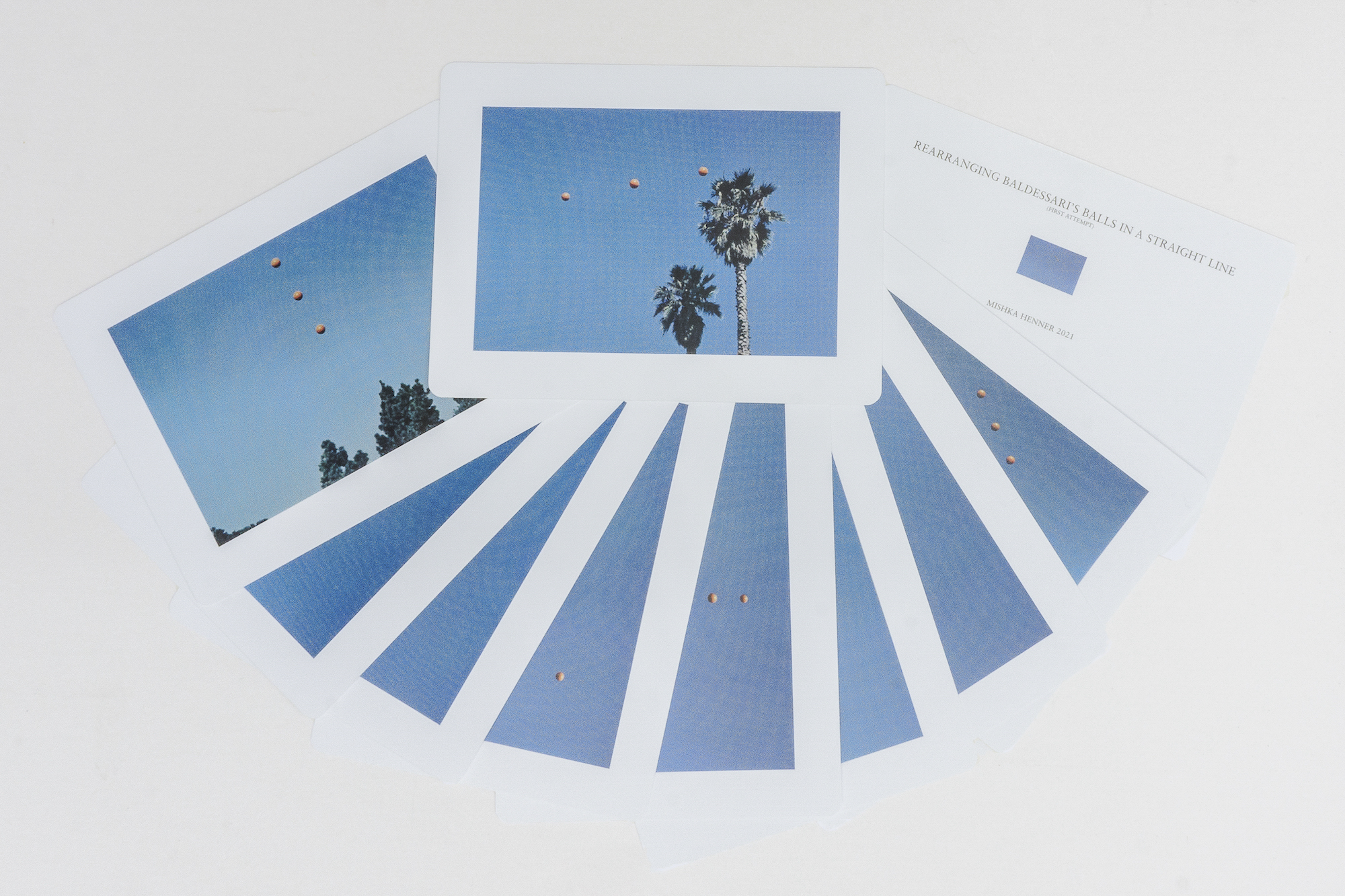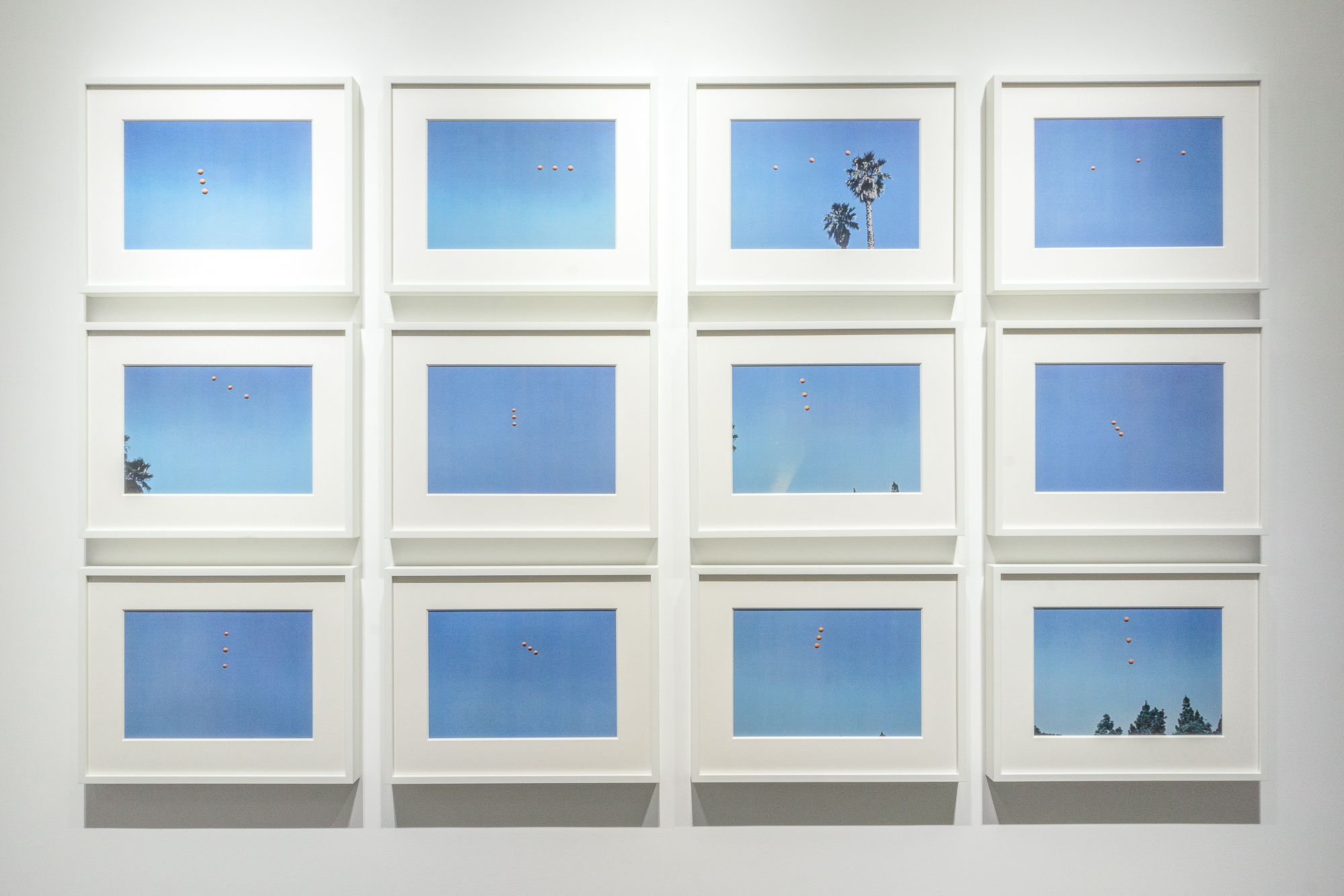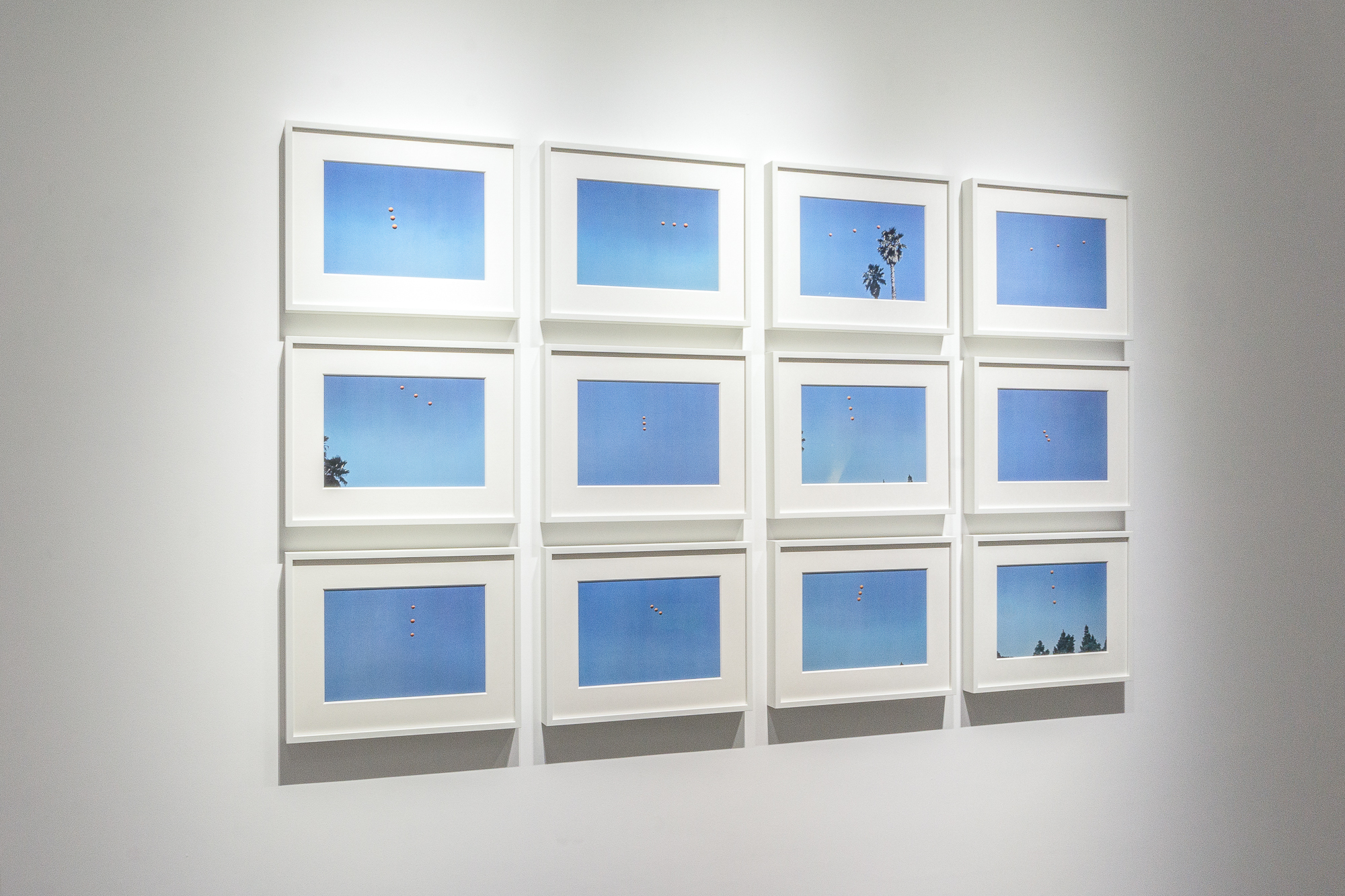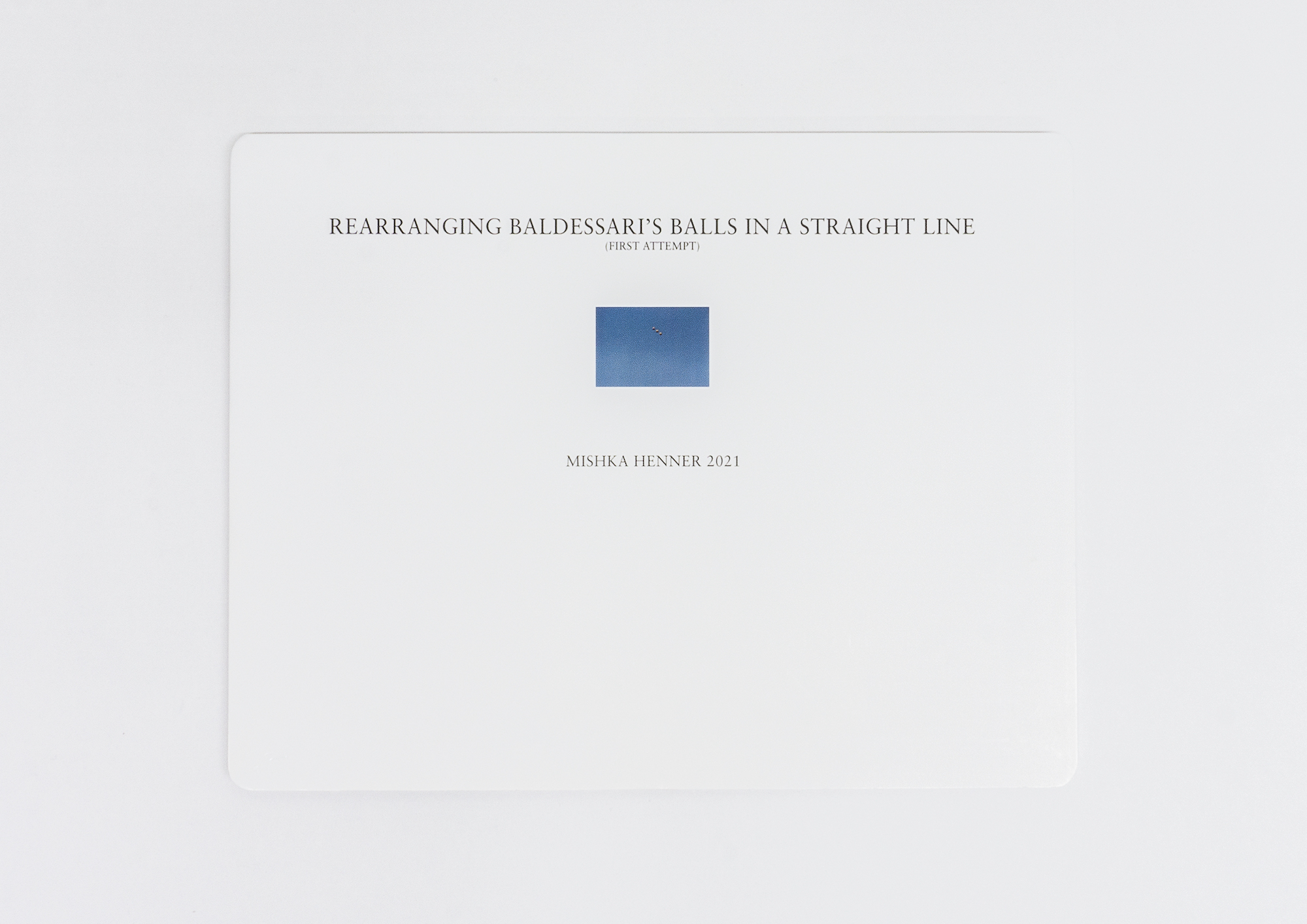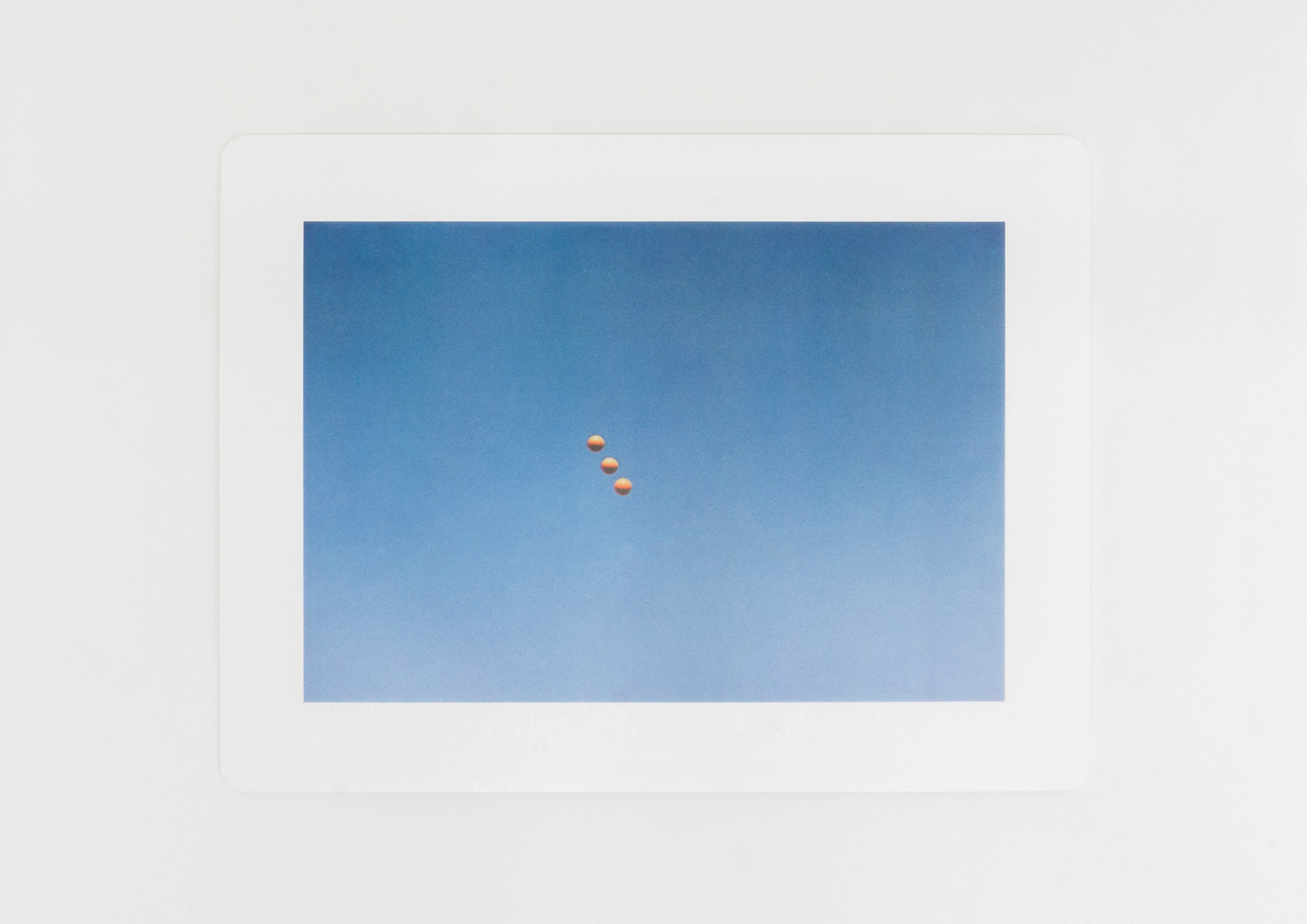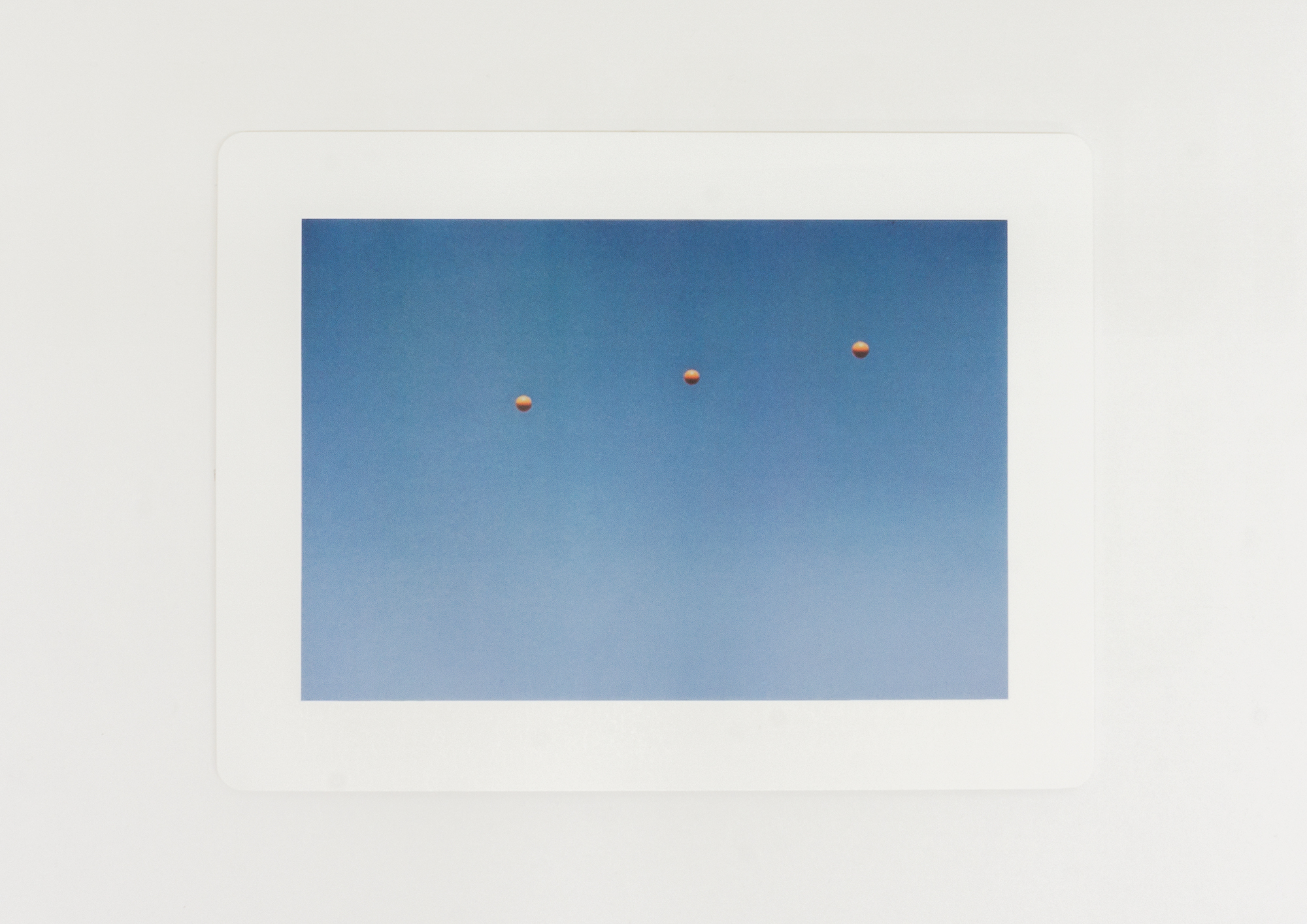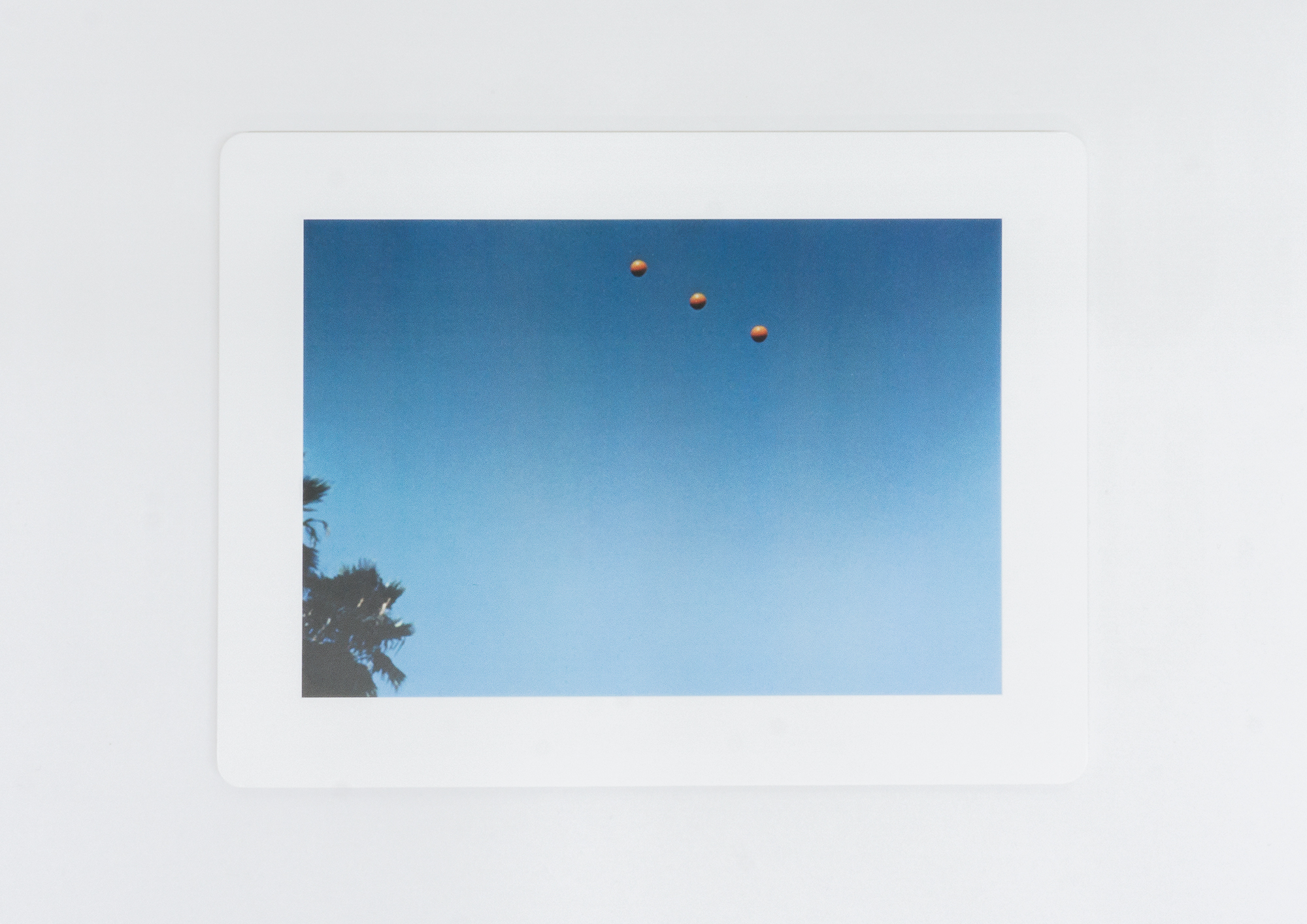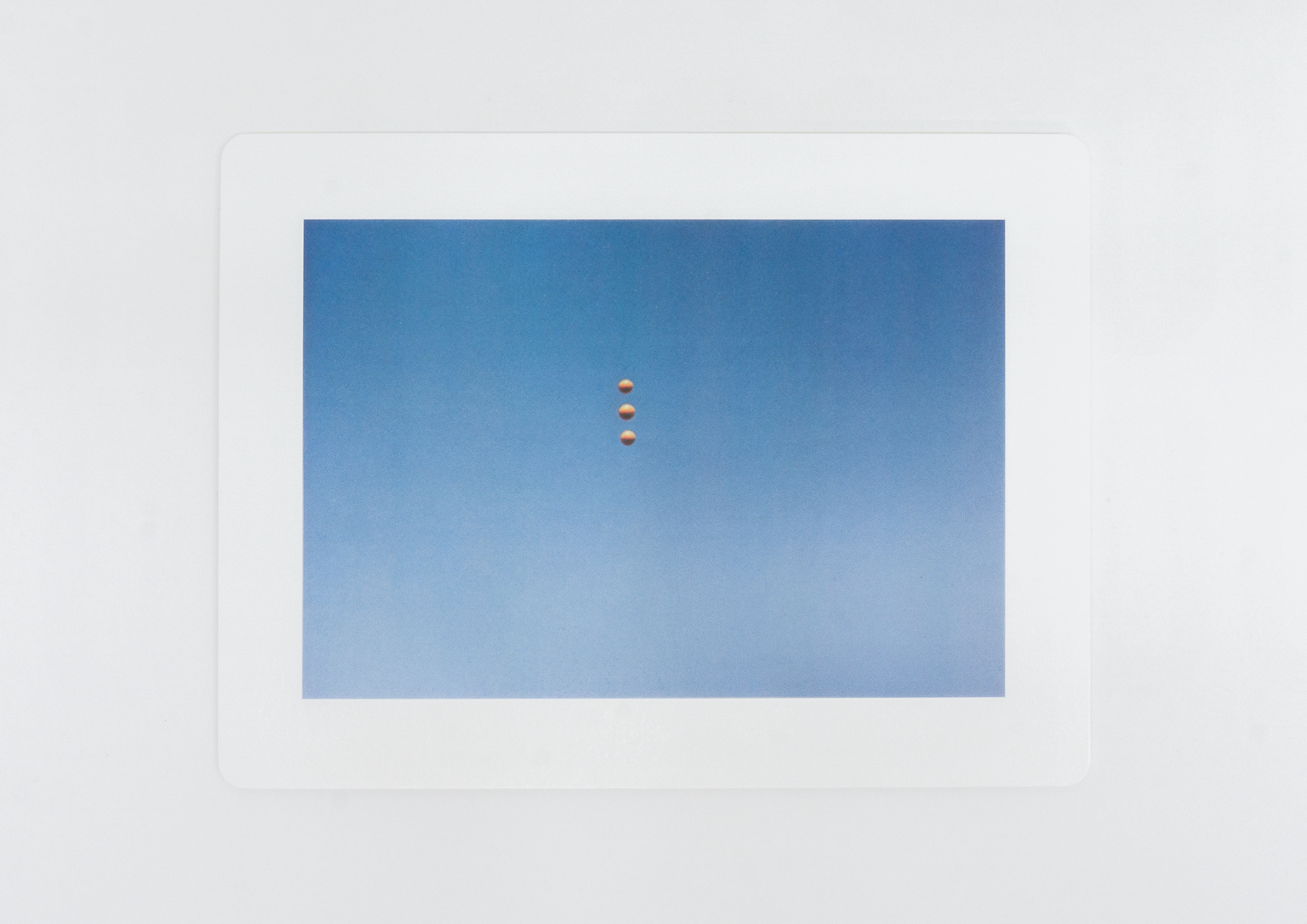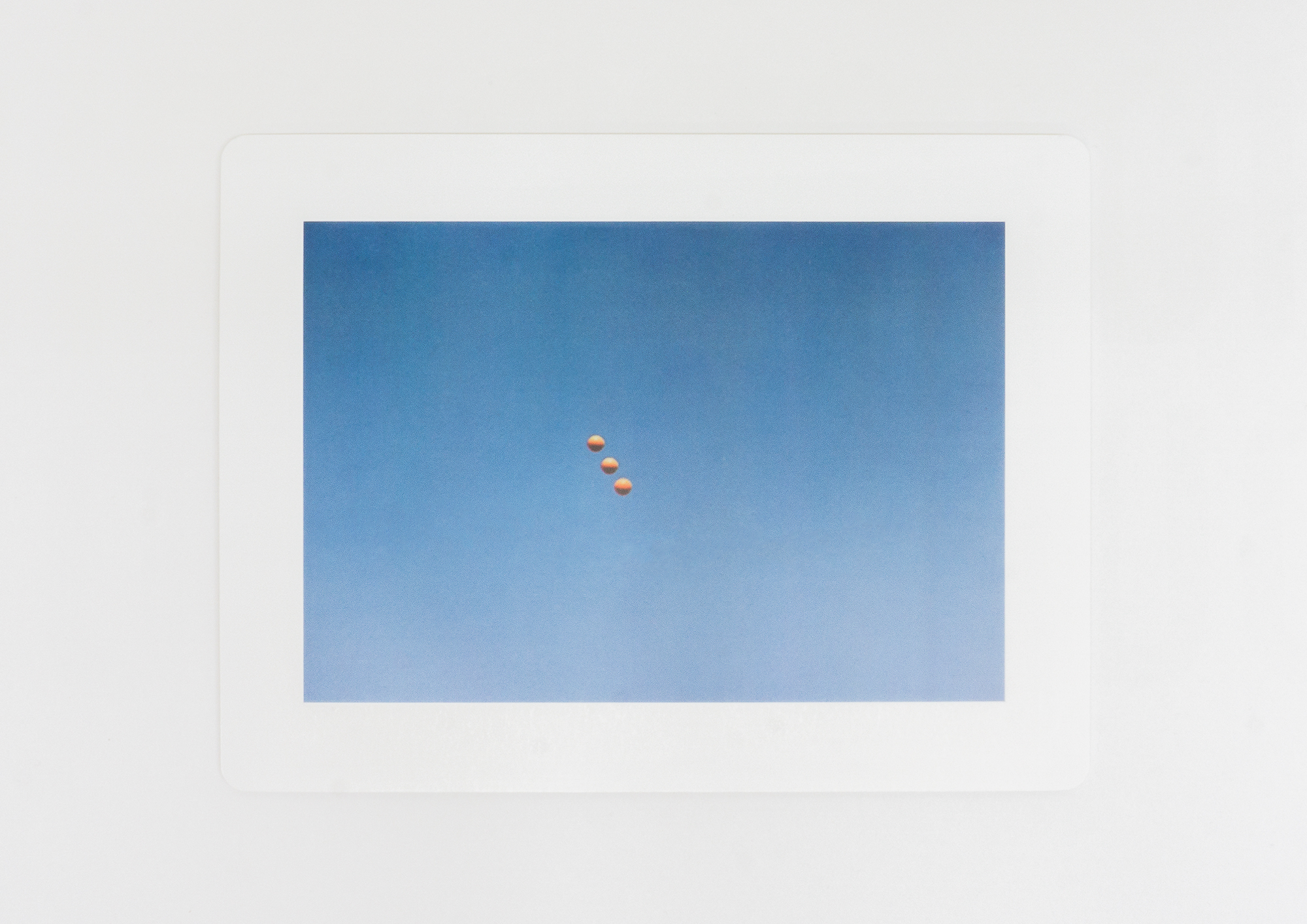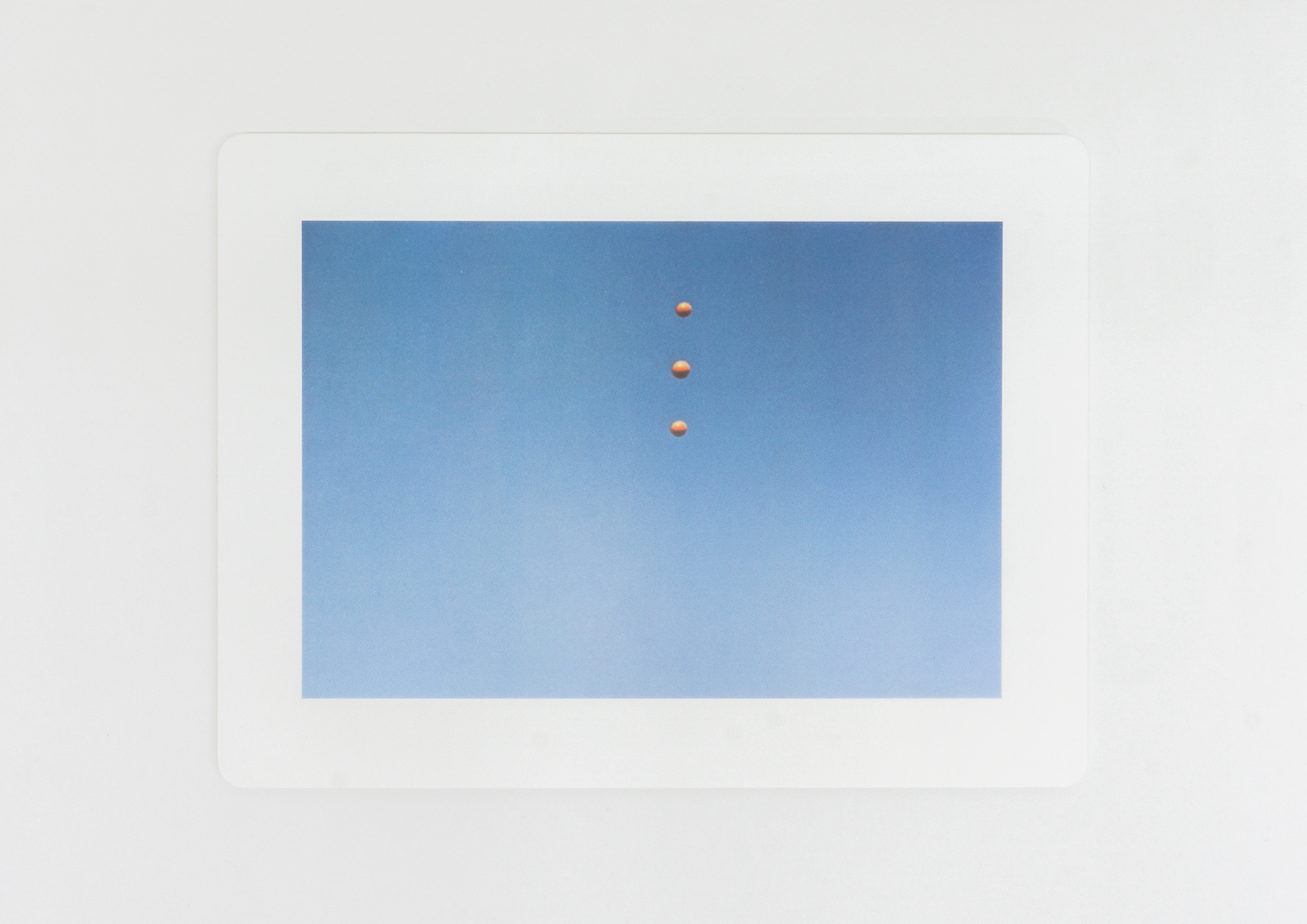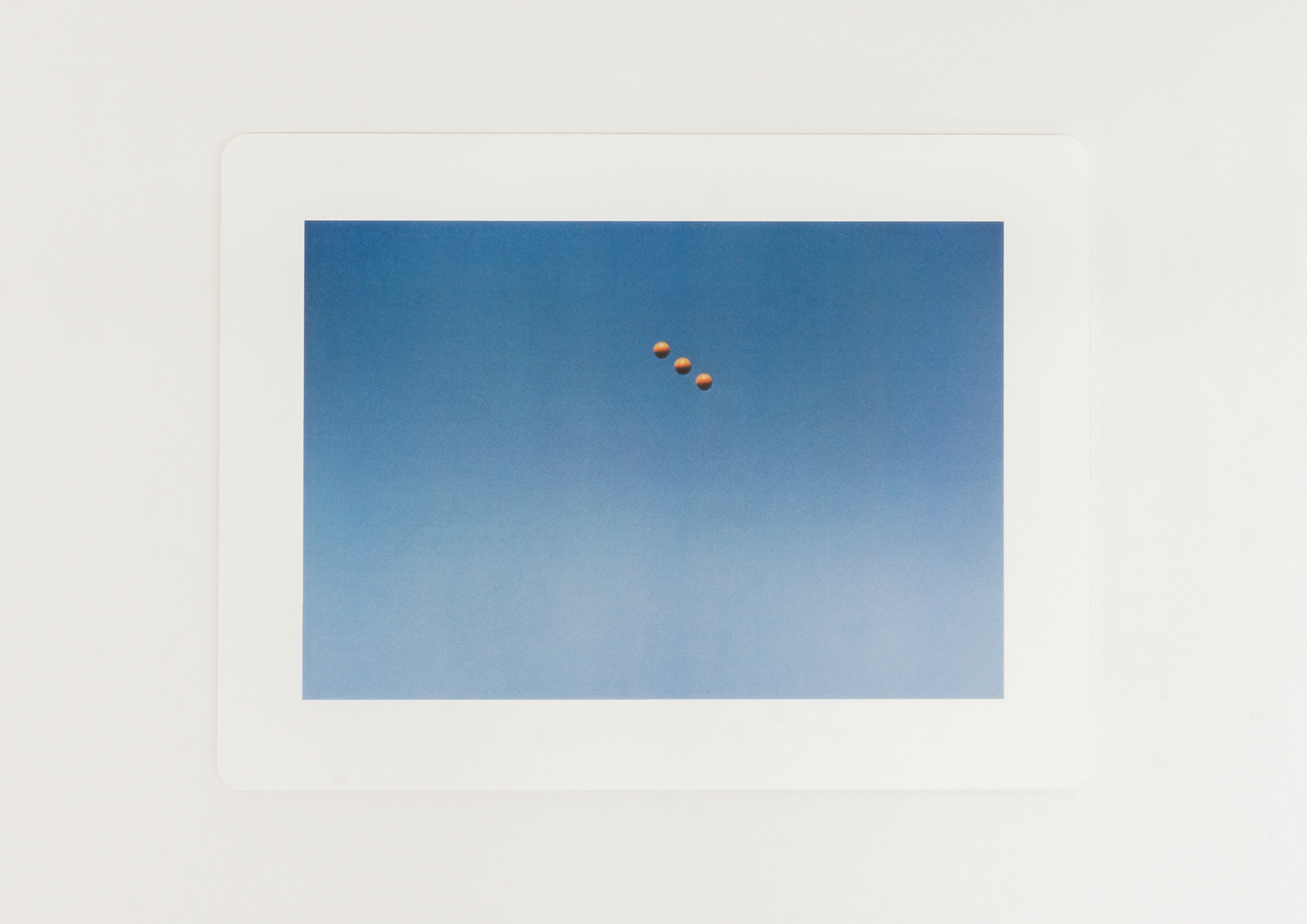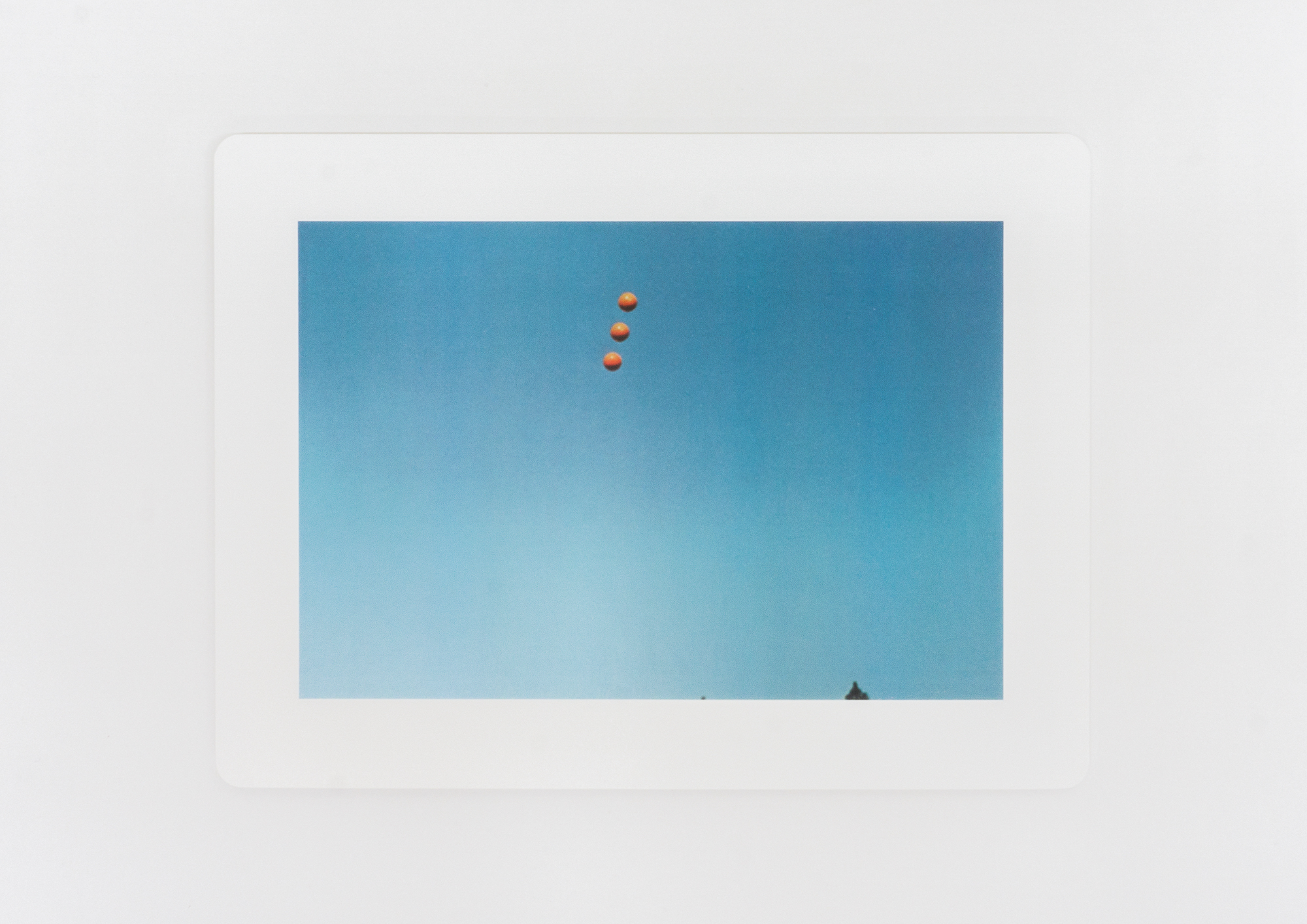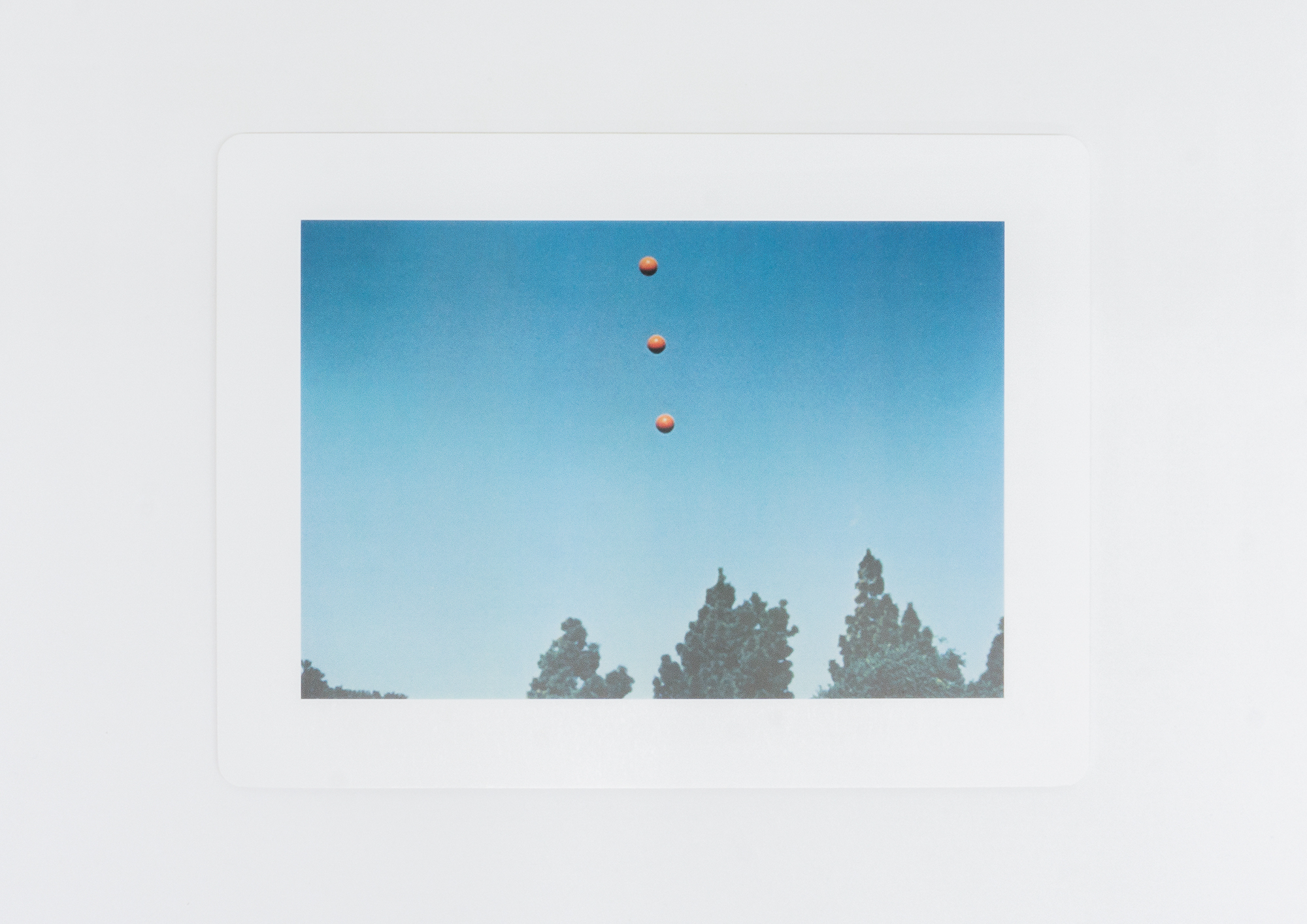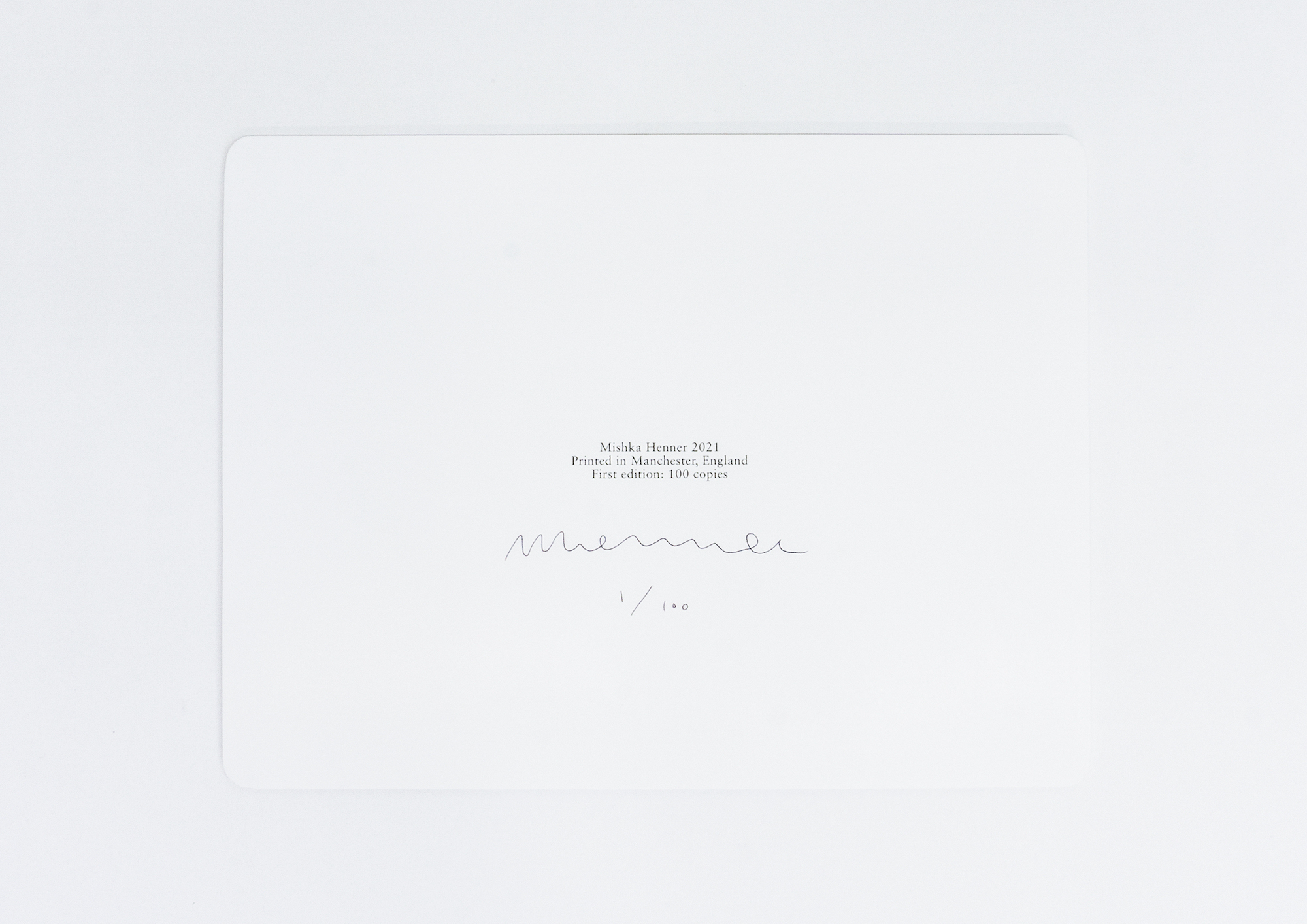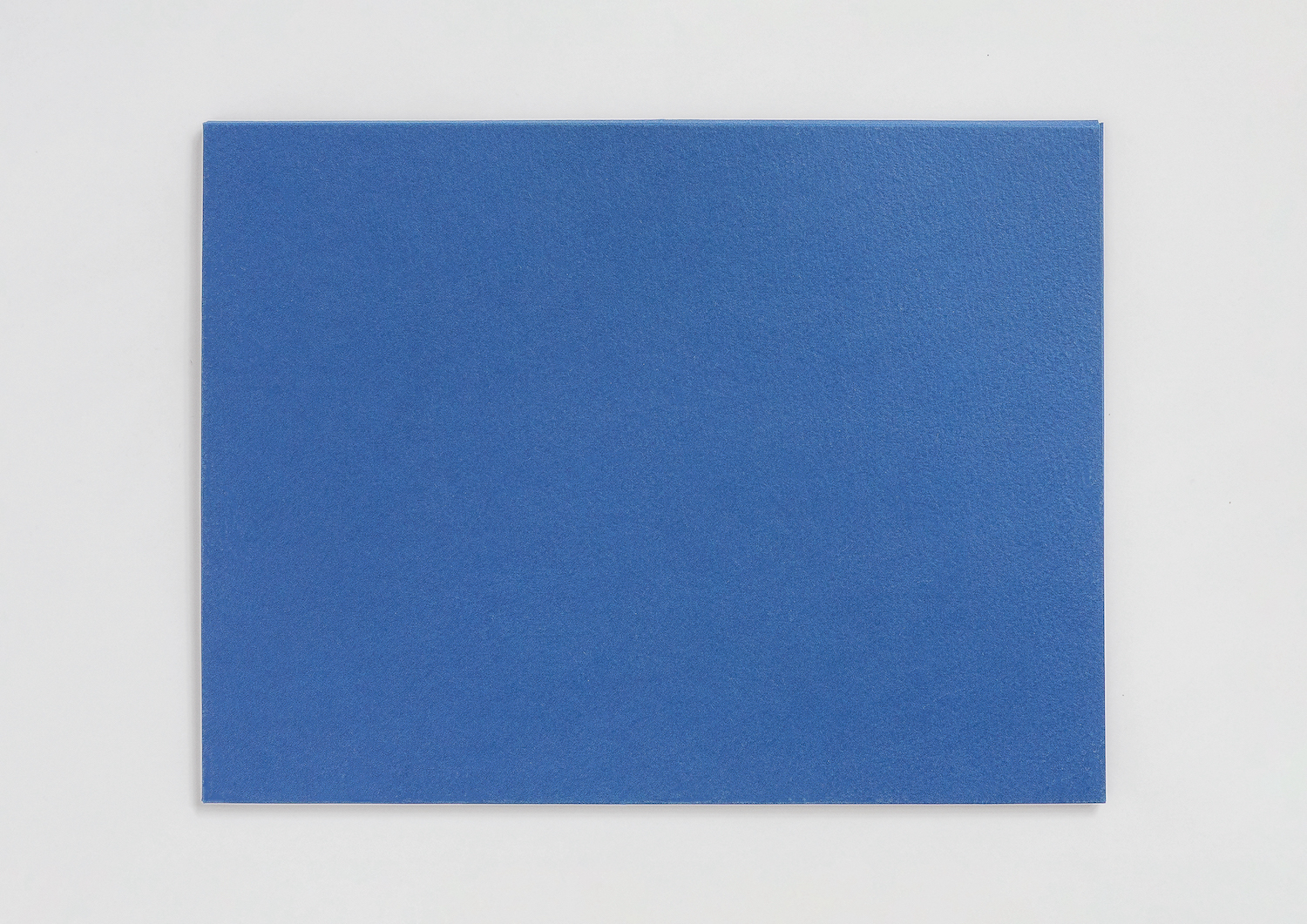Recherche
Mishka Henner
Rearranging Baldessari's Balls In a Straight Line (First Attempt)
Portfolio of 12 offset prints, 17.6 x 25.8 cm (image) / 24.1 x 32.1 cm (paper)
on 300 g/sqm paper with round corners
2 justification pages with colophon, edition number and signature
Protective folder with gold foil embossed title, window and flap
Overall dimensions 24.5 x 23.5 x 1 cm
Signed edition of 100 copies
"On a typically overcast summer's day in 2014, I trawled the internet looking for something meaningful and came across high-resolution JPEGs of John Baldessari's Throwing Three Balls in the Air to Get a Straight Line (Best of Thirty-Six Attempts). Such was Baldessari's influence on my own work that the urge to realign his balls was irresistible. So with heavy grey clouds filling the sky outside my Manchester studio, I did just that."
(Mishka Henner)
In 1973, three years after famously burning all of his paintings produced between 1953 and 1966, John Baldessari (1931-2020) produced a group of twelve photographs gathered in the portfolio Throwing Three Balls in the Air to Get a Straight Line (Best of Thirty- Six Attempts) containing twelve offset lithographs on coated paper (Edizioni Giampaolo Prearo & Galleria Toselli, Milan, edition of 2000 + 500). Baldessari threw three balls in the air in hopes that the camera, operated by his then-wife Carol Wixom, might capture them aloft and aligned. Out of the thirty-six poses from his film, Baldessari retained the twelve best attempts on which one could see the three balls close to alignment in the air. He later said that the difference between the alignment projected in his mind and the physical result stands as a metaphor of the frustrating discrepancy between an artist's conception of a work and its realisation.
Baldessari's legendary series, which questions the ideas of performance and chance, refers to another historical work by Marcel Duchamp, 3 Standard Stoppages. In 1913-14 in Paris, Duchamp dropped three threads, each measuring one meter in length, from a height of one meter onto panels painted in Prussian blue. Three wooden rulers were then made according to the pattern formed by these threads, which Duchamp used as a "template of chance". Baldessari reiterated Duchamp's gesture, but using photography and the implied consequences.
In 2014, Mishka Henner took a few minutes to rearrange in a straight line all the balls on Baldessari's twelve photographs. Using high resolution scans and a digital retouching software, he granted Baldessari's wish - at first attempt. By providing this service, he simultaneously destroyed the fundamental idea contained in Baldessari's work which was already referencing Duchamp's. Digital retouching softwares offer the illusion of a perfect world, where Baldessari's balls are all perfectly aligned and no mistake can happen, hence annihilating any idea of chance. Sometimes technology, nurtured by the belief in progress, offers the illusion of a solution while it generates more damages.
In 2021, one year after John Baldessari's death, Mishka Henner produced with the gallery the portfolio Rearranging Baldessari's Balls In a Straight Line (First Attempt) containing the twelve retouched photographs. With his exact facsimile of the original edition, Henner paid tribute with a meaningful joke to a giant and his balls.
Henner's interest in questioning the nature of authorship is evident in earlier works. With Less Américains (2012), Henner produced high-resolution scans of Robert Frank's seminal 1958 photobook The Americans [Les Américains], zoomed into each image and painstakingly erased details and contours until only skeletal traces of the original photographs remained. A project on which Henner wrote: "In 1953, Robert Rauschenberg erased a Willem de Kooning drawing. I read about it and related to Rauschenberg's impulse. I wondered what might happen if a similar thing were to be done with the work of a colossus in the history of photography. It had to be The Americans; Sacrosanct and mythologised to the point that half a century later it has generated its own industry of reverence". In Richtered (2012), Henner saw parallels in the paintings of Gerhard Richter and Ed Ruscha and digitally remixed them to create new layers of meaning where the authors had previously negated them. In Sight Seeing (2021), Henner turned his attention to his own gaze by using eye-tracking software to track during 10 seconds the movement of his eyes across a found image of High Yellow, an abstract painting created in 1960 by American painter Ellsworth Kelly (1923 - 2015). Rearranging Baldessari's Balls In a Straight Line (First Attempt) (2014-2021) is the fourth installment in Henner's enterprise of questioning authorship in the 21st Century.
(Jean-Kenta Gauthier)
Artist's page
